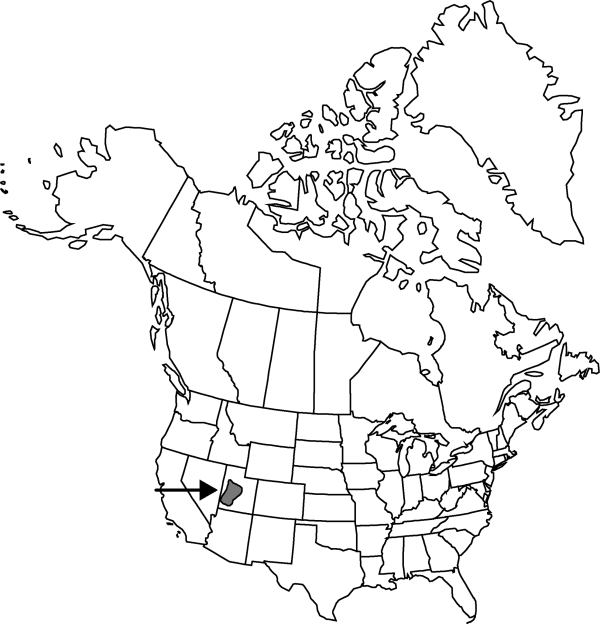Difference between revisions of "Sclerocactus spinosior"
Cact. Succ. J. (Los Angeles) 48: 131. 1976.
FNA>Volume Importer |
FNA>Volume Importer |
(No difference)
| |
Revision as of 20:00, 24 September 2019
Stems usually unbranched, light green to dark green, ovoid or cylindric, 2–15(–23) × 1–10(–15) cm, glaucous; ribs (11–)13–14, tubercles prominent on ribs. Spines frequently obscuring stems; radial spines 6–10(–12) per areole, spreading, tipped white or dark, 10–35 × 0.3–1 mm; central spines (2–)4–6 per areole; abaxial centrals (1–)3 per areole, reddish to black, less often tan to brown, usually 1–2 hooked, except some older areoles, 20–40 mm; lateral central spines usually 2 per areole, tan, red, or reddish brown, terete, 10–30 mm; adaxial central spines 1(–3) white, flattened, 20–60 × 0.7–1.6 mm. Flowers narrowly funnelform to campanulate, 2–5 × 1–4 cm; outer tepals with greenish brown or reddish brown midstripes and pink, violet-pink, or reddish purple margins, usually oblanceolate, 10–20 × 4–7 mm, usually mucronate, margins nearly entire; inner tepals reddish purple to lavender, oblanceolate to narrowly oblanceolate, 15–25 × 6–8 mm, margins paler, nearly entire; filaments yellow, green, red-violet, or pink; anthers yellow; styles minutely and sparsely papillate. Fruits dehiscent along 2–4 vertical slits, green to pink or pale red, barrel-shaped, 9–13 × 8–12 mm, dry; scales few, membranous, scarious-margined. Seeds black, 2–2.5 × 2.5–3 mm; testa with rounded papillae.
Phenology: Flowering late Apr–May.
Habitat: Igneous or calcareous gravels, sagebrush and shadscale flats, pinyon-juniper woodlands
Elevation: 1500-2000 m
Discussion
Sclerocactus spinosior is morphologically similar to S. pubispinus and S. blainei (see discussions of those species). There is a variety of taxonomic opinions for handling species boundaries of S. spinosior. F. Hochstätter (1997) treated S. blainei at the subspecific level under S. spinosior; whereas S. L. Welsh (1984b) included S. spinosior as a variety of S. pubispinus. Phylogenetic analyses of chloroplast DNA sequences (J. M. Porter et al. 2000) provided evidence of close relationship among S. spinosior, S. pubispinus, and S. blainei, but no specific sister-group relationship for S. spinosior. Here we maintain all three at the rank of species.
Selected References
None.
